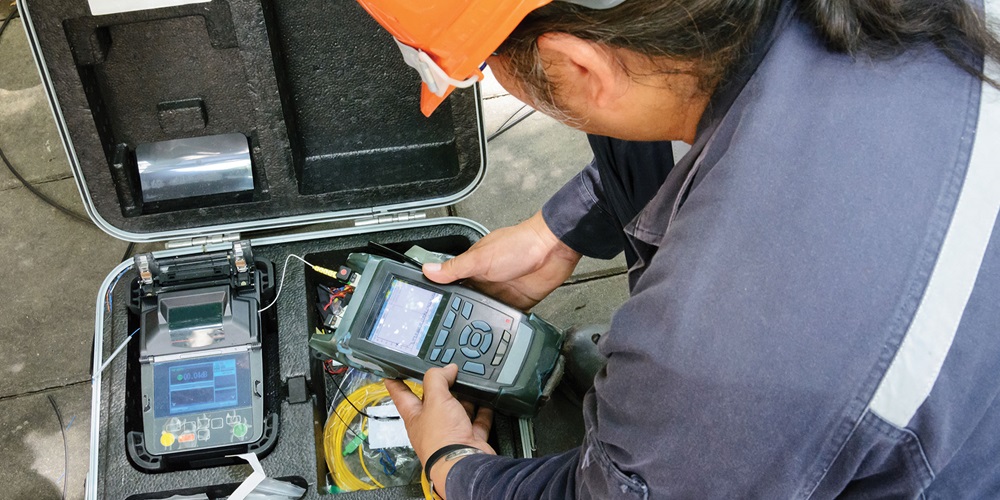The Function of Optical Fiber Screening in Ensuring Quality and Effectiveness in Connection Solutions
In today's swiftly evolving electronic landscape, the value of optical fibre screening can not be overstated, as it offers as a cornerstone for guaranteeing the quality and performance of connection solutions. As technology continues to breakthrough, the future of optical fibre testing postures fascinating challenges and opportunities that warrant closer evaluation.
Importance of Optical Fiber Screening
The value of optical fibre testing can not be overstated in making sure the integrity and efficiency of communication networks. As the foundation of modern telecoms, optical fibres promote high-speed data transmission, making their reliability important to functional success. Examining offers as a positive measure to recognize possible concerns such as signal loss, attenuation, and physical damages, which can compromise network efficiency.
Routine screening permits the confirmation of installation high quality and the detection of issues that could affect information honesty - fibre testing equipment. By using strenuous testing procedures, network operators can minimize the risks connected with network failures, consisting of downtime and financial losses. Optical fibre screening ensures compliance with industry standards and laws, enhancing the total top quality of solution given to end-users.
Eventually, the systematic analysis of optical fibres adds to the longevity and efficiency of interaction systems. It enables stakeholders to make informed choices regarding upkeep, upgrades, and troubleshooting. In a landscape where data is increasingly important, focusing on optical fiber screening is necessary to sustaining robust and reliable connection options, therefore supporting the needs of modern digital settings.
Sorts Of Optical Fiber Tests
Various screening methods are utilized to make sure the performance and integrity of optical fibers within interaction networks. These examinations can be extensively classified right into 2 main kinds: installation examinations and maintenance examinations.
Installation tests are carried out promptly after the installment of optical fiber cable televisions to confirm their performance and integrity - optical fibre diameter analyser. One of the most common installation examinations consist of Optical Time-Domain Reflectometry (OTDR) examinations, which analyze the quality of the fiber by determining mistakes or breaks, and end-to-end loss tests, which determine the overall optical loss from one end of the fibre to the various other
Maintenance tests, on the various other hand, are executed regularly to make certain recurring efficiency and spot prospective concerns with time. These consist of aesthetic examination, which look for physical problems or inappropriate installations, and continuity examinations, which verify that the signal can travel through the fibre without disturbance.
Additionally, progressed examinations such as Polarization Mode Diffusion (PMD) and Chromatic Dispersion (CD) examinations can be carried out to examine the fibre's performance under numerous conditions. By utilizing these varied testing methods, professionals can preserve high requirements of quality and integrity in optical fibre networks.
Advantages of Regular Testing
Normal testing of optical fibres plays an important function in keeping the general efficiency and reliability of interaction networks. By performing regular assessments, organizations can ensure that their fibre optic installments fulfill industry requirements and operate efficiently. This proactive strategy assists to identify potential weak points and degradation over time, enabling timely interventions before concerns escalate.

Cost-effectiveness is an additional benefit. By addressing small problems early, organizations can avoid the high costs related to significant repair services or system failures. Regular screening additionally cultivates compliance with regulative requirements, ensuring that the network complies with essential safety and performance standards.
Typical Concerns Recognized
Identifying usual concerns in optical fibre networks is necessary for keeping optimum performance and integrity. Different aspects can contribute to disturbances, including physical damage, bad installment practices, and environmental impacts.
Physical damages, such as bends, breaks, or abrasions, can dramatically weaken signal quality. Improper setup strategies, including extreme tension or poor safeguarding of cords, may bring about enhanced attenuation and loss of connectivity. Additionally, ecological elements such as temperature level fluctuations, wetness ingress, and rodent interference can jeopardize the integrity of the fibre.
Connector problems likewise regularly emerge, with incorrect positioning or contamination resulting in raised insertion loss. Moreover, splicing errors can present considerable signal deterioration if not implemented with accuracy.

Addressing these common concerns with normal optical fibre screening not just boosts network reliability yet also optimizes total performance, guaranteeing that connection services stay robust and reliable.
Future Patterns in Testing
As the demand for high-speed connection proceeds to increase, the future of optical fibre testing will progressively concentrate on automation and progressed analytics. The combination of man-made knowledge (AI) try this website and equipment learning (ML) in testing processes will enable more effective information analysis and anticipating upkeep, minimizing downtime and boosting general network dependability. Automated screening solutions will certainly enhance the assessment and accreditation of fiber networks, lessening human mistake and raising screening throughput.
Another significant pattern is the adoption of remote testing modern technologies. As the release of fiber networks expands right into remote and underserved areas, remote screening capabilities will enable professionals to keep an eye on and identify network conditions without physical existence, thus lowering operational costs and improving feedback times.
Additionally, there will certainly be a change in the direction of even more extensive screening criteria that incorporate not just standard loss dimensions but additionally efficiency metrics such as latency and bandwidth utilization. This alternative approach will certainly help with far better network administration and optimization techniques.
As these trends advance, the optical fibre testing landscape will not only enhance the top quality and performance of connectivity solutions but additionally sustain the growing complexities of modern communication networks.
Final Thought
In final thought, optical fiber testing serves as a basic element in preserving the integrity visit our website and effectiveness of interaction networks. The continuous commitment to normal testing not only boosts information transmission however also straightens with industry criteria, cultivating integrity in network infrastructures.
Comments on “The latest optical fibre testing equipment improves troubleshooting and diagnostics in telecommunications.”